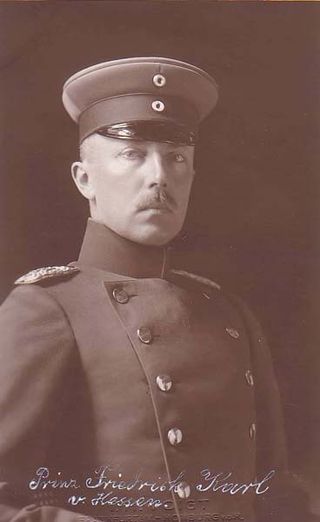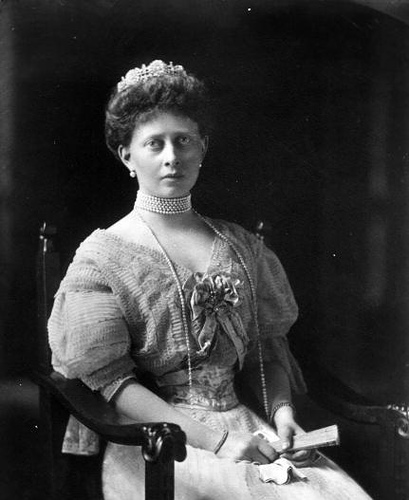by Scott Mehl © Unofficial Royalty 2015

Prince Christian of Schleswig-Holstein source: Wikipedia
Prince Christian of Schleswig-Holstein (Friedrich Christian Karl August) was the husband of Princess Helena, the third daughter of Queen Victoria of the United Kingdom and Prince Albert of Saxe-Coburg and Gotha. He was born on January 22, 1831, at Augustenborg Palace in Augustenborg, Denmark, the sixth of seven children of Christian August II, Duke of Schleswig-Holstein-Sonderburg-Augustenburg and his wife, Countess Louise Sophie of Danneskiold-Samsøe.
Christian had six siblings:
- Prince Alexander (1821 – 1823), died young
- Princess Louise Auguste (1823 – 1872)
- Princess Caroline Amelie (1826 – 1901)
- Princess Wilhelmine (1828 – 1829), died young
- Friedrich VIII, Duke of Schleswig-Holstein (1829-1880), married Princess Adelheid of Hohenlohe-Langenburg, had issue including Augusta Viktoria, German Empress
- Princess Henriette (1833 – 1917), married Johann Friedrich von Esmarch
While attending the University of Bonn, Christian became close friends with the future German Emperor Friedrich III. This friendship would serve him well in later years, as Friedrich’s wife Victoria, Princess Royal was the elder sister of Christian’s future wife. The German couple would fully support Christian’s marriage to Helena, despite significant opposition from other members of Helena’s family.
It was on a visit to Coburg in the Duchy of Saxe-Coburg and Gotha in May 1865 that Christian and Helena’s romance began. Despite the fifteen-year age difference, they were drawn to each other. With the support of, and perhaps some prodding by Queen Victoria, the couple’s engagement was announced in December of the same year. Part of the agreement with Queen Victoria was that the couple would live in the United Kingdom, close to The Queen. As Christian had no specific career or ambitions, this was quickly agreed to. Just before the wedding, The Queen raised Christian’s style to ‘Royal Highness’, although this only applied in the United Kingdom. They married in the Private Chapel at Windsor Castle on July 5, 1866, and settled at nearby Frogmore House.
Christian and Helena had five children:
- Prince Christian Victor (1867-1900) – unmarried
- Prince Albert, later Duke of Schleswig-Holstein (1869-1931) – unmarried, illegitimate issue
- Princess Helena Victoria (1870-1948) – unmarried
- Princess Marie Louise (1872-1956) – married Prince Aribert of Anhalt (marriage dissolved), no issue
- Prince Harald (born and died 1876) – died at 8 days old
A favorite of Queen Victoria, Christian was created a Knight of the Garter and Knight Grand Cross of the Royal Victorian Order, as well as an Aide-de-Camp to both Queen Victoria and King Edward VII. In 1866, The Queen appointed him Ranger of Windsor Great Park. In 1872, with the impending birth of their fourth child, Christian and his family moved from Frogmore House and took up residence at Cumberland Lodge, the traditional home of the Ranger of Windsor Park. During Queen Victoria’s reign, the family would stay at Buckingham Palace when they needed lodgings in London.
Not having any particular job or military career, Prince Christian was perfectly content being at Queen Victoria’s beck and call. With his wife assuming much of the role of unofficial secretary to Her Majesty, Christian also assisted with paperwork, primarily dealing with the family, and would often be called to read to The Queen or handle any other matters she saw fit to pass along to him. The Queen intended to fully utilize Helena and Christian until Princess Beatrice was old enough to take over the role.
In December 1891, while out on a shoot with his brother-in-law, Prince Arthur, Duke of Connaught, Arthur accidentally shot Christian in the face. One eye was completely shot out, with some minor damage to the other. Christian, in his usual unprepossessing manner, made the best of the situation. He amassed a significant collection of glass eyes in various shades and colors. He would amuse, and sometimes shock, guests by appearing with two different colored eyes, even having some made to appear bloodshot should he need to match his good eye following a late night.
Following Queen Victoria’s death in 1901, Christian and his family were given the former De Vesci House at 77-78 Pall Mall as their London home. Later known as Schomberg House, it would remain in Christian’s family until the late 1940s. Despite his advancing age, he often represented his brother-in-law King Edward VII at foreign functions. Notable amongst these was the silver anniversary celebration of Wilhelm II, German Emperor and Augusta Viktoria, German Empress in 1906. Christian and Helena were aunt and uncle to both of them, as the Emperor was the son of Helena’s eldest sister and Empress was the daughter of Christian’s brother.
The last few years of Christian’s life saw some major events. In 1916, he and Helena celebrated their 50th wedding anniversary, the first in the British royal family since King George III and Queen Charlotte. Then, in July 1917, Christian and his family gave up their German titles, at the request of King George V. While many other relatives lost their Princely titles completely, Christian retained his, simply dropping the ‘of Schleswig-Holstein’ designation.

“Schleswig-Holstein plot at Royal Burial Ground, Frogmore” by Peter symonds – Own work. Licensed under GFDL via Wikimedia Commons.
Just three months later, Prince Christian died on October 28, 1917, at Schomberg House in London, England. Following his funeral at St George’s Chapel, Windsor, his remains were placed in the Royal Crypt there. In 1928, along with the remains of his wife and their son Harald, Christian was re-interred in the newly established Royal Burial Ground at Frogmore in Windsor, England.
This article is the intellectual property of Unofficial Royalty and is NOT TO BE COPIED, EDITED, OR POSTED IN ANY FORM ON ANOTHER WEBSITE under any circumstances. It is permissible to use a link that directs to Unofficial Royalty.




























